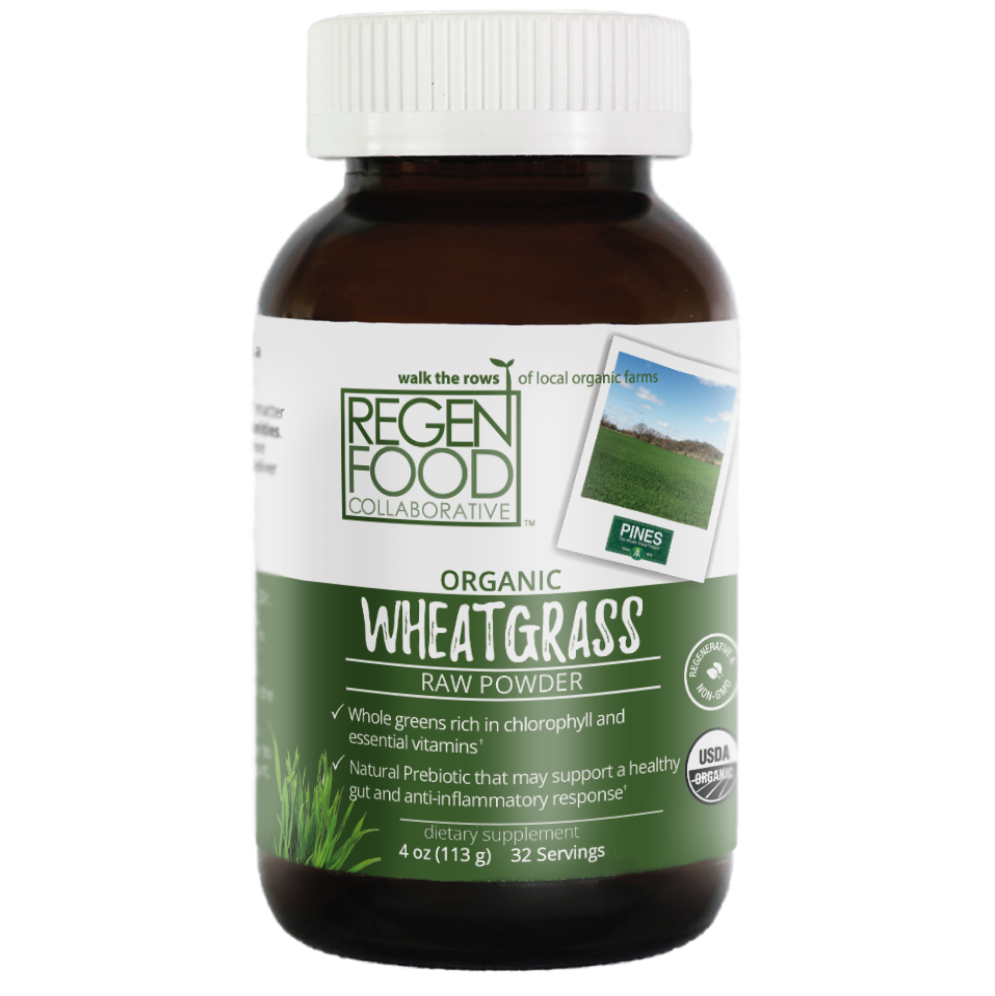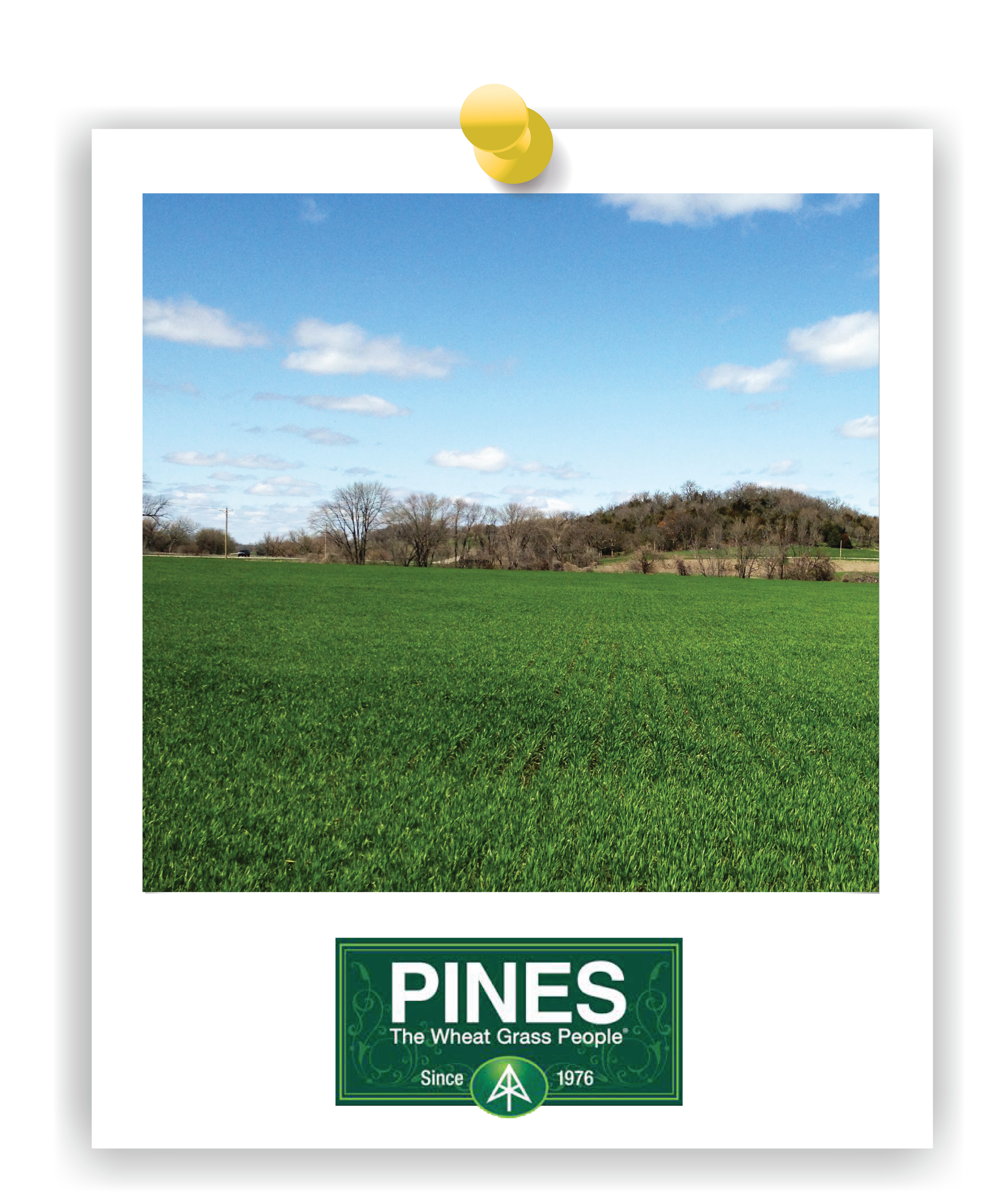Pines Wheat Grass
Charles Schnabel and a team of scientists began studying wheatgrass and other cereal grasses in 1931. They determined the best climate, location, soils, stage of growth, and low temperature drying methods. Pines follows the 75-year growing and harvesting standards established by those scientists at Cerophyl Laboratories.
Pines Wheat Grass is grown in the same kind of glacial soils that produced the most nutritious wheatgrass in the research. It matures slowly outdoors during cold months. Freezing nighttime temperatures and cold days convert months of full sunlight into nutritional density, all while the plant remains a short grass.







